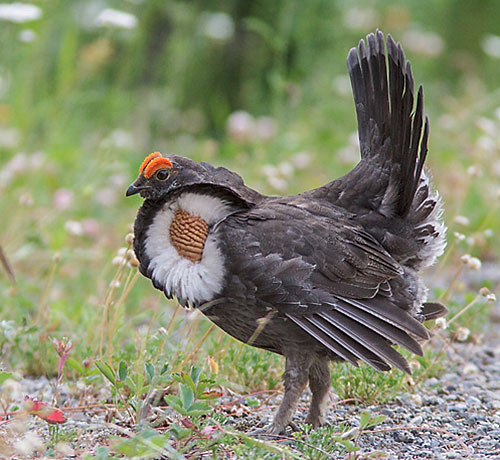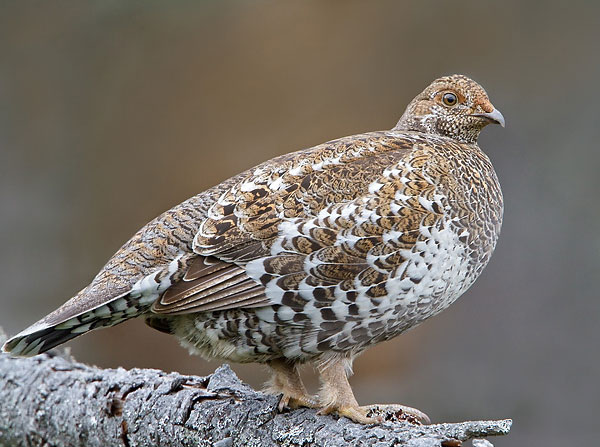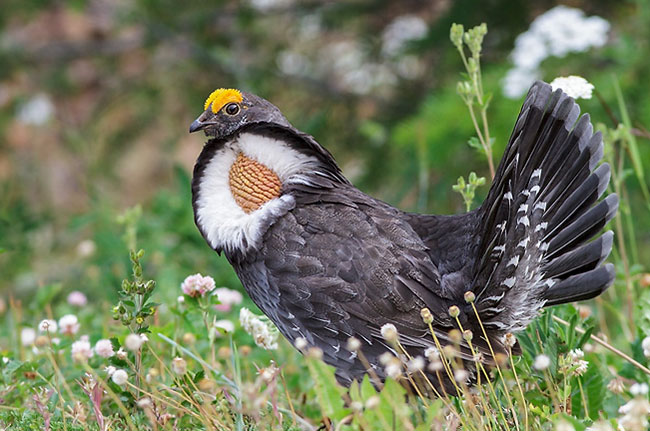The mostly coastal form of the species once known as Blue Grouse, the Sooty Grouse was recently split from the Dusky Grouse, and is made up of four recognized subspecies. Sooty Grouse do not occur on islands much more than one mile from shore, indicating the likely extent of their flying ability.
Among the many potential predators of Sooty Grouse, raptors may account for the largest share of mortality, with mammals next in line. Particularly long-lived individuals can survive for well over 10 years in the wild, and males are very likely to return to breeding territories year after year.
Length: 20 inches
Wing span: 26 inches
Description of the Sooty Grouse
BREEDING MALE
The Sooty Grouse is a sexually dimorphic, large grouse with a long tail.
Males are mostly dark gray, with a blackish tail tipped with silvery-gray, a yellow comb above the eye, and inflatable yellow neck sacs visible when displaying.

Photograph © Glenn Bartley
Female
Females are mostly brownish with pale speckling.
Seasonal change in appearance
None.
Juvenile
Juveniles resemble adult females.
Habitat
Sooty Grouse inhabit deciduous and mixed forest to breed, and coniferous forests in winter.
Diet
Sooty Grouse eat conifer needles and leaves.
Behavior
Sooty Grouse forage on the ground in the summer, and in trees during winter.

Female
Range
Sooty Grouse are resident in mountains along the west coast of Canada and the northern U.S. The population is declining.
Fun Facts
Sooty Grouse were formerly lumped with Dusky Grouse and called Blue Grouse.
Males have a dramatic courtship display involving a fanned tail, inflated air sacs, and strutting.
Vocalizations
The song consists of a single or repeated, loud hoot. Several clucks are given also.
Similar Species
- Spruce Grouse have shorter tails. Dusky Grouse males have purplish air sacs and are slightly paler.
Nesting
The Sooty Grouse’s nest consists of a shallow scrape lined with needles and leaves, usually under cover of vegetation or a rock.
Number: Usually lay 5-10 eggs.
Color: Buffy with darker markings.
Incubation and fledging:
The young hatch at about 25-28 days, and leave the nest shortly after hatching, though associating with the adults for some time.


